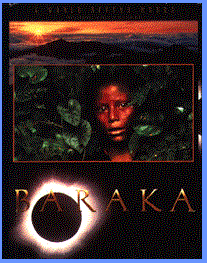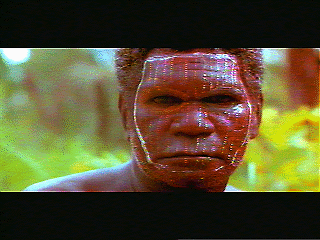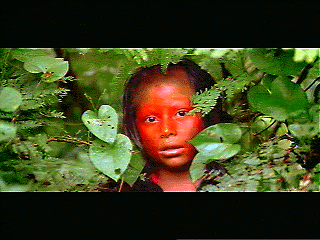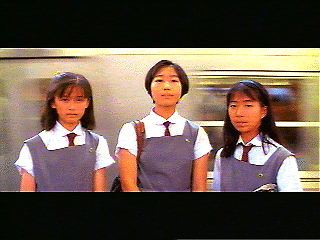




and his use of celestial, sweeping music, serve to distance the viewer from the viewed rather than bring them closer together. Nevertheless, it is still a powerful film.
Fricke has directed and collaborated on several other films. Chronos (1985), directed by Fricke, seems to offer a slightly different message than Baraka. Rather than making some statement about humanity or trying to evoke a positive sense of kinship and universality (as Baraka does), Chronos seems concerned mainly with representations of the passage of time and presenting a contrast between nature/classical societies (i.e. the Greeks, Romans, Egyptians)/the past and industry/society/the present. Again, the sequences of images and the accompanying soundtrack evoke strong feelings in the viewer and a sense that things are moving rapidly in our modern world.
Fricke also performed the cinematography for Koyaanisqatsi (1983), by director Godfrey Reggio. The title is a Hopi word which translates as "life out of balance." Again, the film is concerned with trying to communicate a social message, namely that our modern society is out of balance. Fricke's cinematography is strong but not as compelling as in Baraka.
Another film by director Godfrey Reggio (for which Fricke did not do the cinematography), Powaqqatsi, is interesting to compare and contrast with the films mentioned above. The title is also a Hopi word, translating roughly as "an entity, a way of life, that consumes life forces of other beings in order to further its own life" (from Powaqqatsi). Powaqqatsi is concerned with showing how interactions between the first and third worlds are changing those third world cultures. The rhythmic, rapid music combined with short cuts of people working serve to create a feeling of closeness and kinship between the viewer and viewed.
All four films are similar in that they have some greater message to convey to the viewer, but the way in which they convey those messages is subtly affected by music and cinematography. It is worthwhile to see all of them, but Baraka is by far the most compelling.

 Dead Can Dance (Baraka soundtrack)
Dead Can Dance (Baraka soundtrack)
 A World Without Words (Information and reviews about Baraka)
A World Without Words (Information and reviews about Baraka)
 Discographies of Powaqqatsi and Koyaanisqatsi, as well as other films with records by Philip Glass. *note* this link can take about 15 minutes to load due to the graphics, so be careful!
Discographies of Powaqqatsi and Koyaanisqatsi, as well as other films with records by Philip Glass. *note* this link can take about 15 minutes to load due to the graphics, so be careful!
 Cultural Survival, Inc. An organization devoted to rainforest extractivism and the cultural preservation of indigenous peoples.
Cultural Survival, Inc. An organization devoted to rainforest extractivism and the cultural preservation of indigenous peoples.
 SCESCAPE world library database for arts and film Very good for searching for somewhat esoteric films.
SCESCAPE world library database for arts and film Very good for searching for somewhat esoteric films.
 The Multicultural Network, with links to the Irish American, Native American, African American, Puerto-Rican-American, and Jewish American Networks.
The Multicultural Network, with links to the Irish American, Native American, African American, Puerto-Rican-American, and Jewish American Networks.
 The Aboriginal Information SuperhighwayAboriginal government, organizations, businesses, arts, and crafts relating to the native peoples of Canada.
The Aboriginal Information SuperhighwayAboriginal government, organizations, businesses, arts, and crafts relating to the native peoples of Canada.
 Catalog of the Americas, featuring products made by indigenous peoples of the Americas.
Catalog of the Americas, featuring products made by indigenous peoples of the Americas.
 Mbira home page featuring information about Mbira, Marimba, and Chimurenga music from Zimbabwe, as well as the Shona and Hdebele customs.
Mbira home page featuring information about Mbira, Marimba, and Chimurenga music from Zimbabwe, as well as the Shona and Hdebele customs.
 New Zealand Magazine, featuring information about New Zealand culture.
New Zealand Magazine, featuring information about New Zealand culture.
 Persianet, with information about Iranian culture, art, and news, as well as information about Iranian homepages, businesses, and happenings.
Persianet, with information about Iranian culture, art, and news, as well as information about Iranian homepages, businesses, and happenings.
acrichar@mit.edu